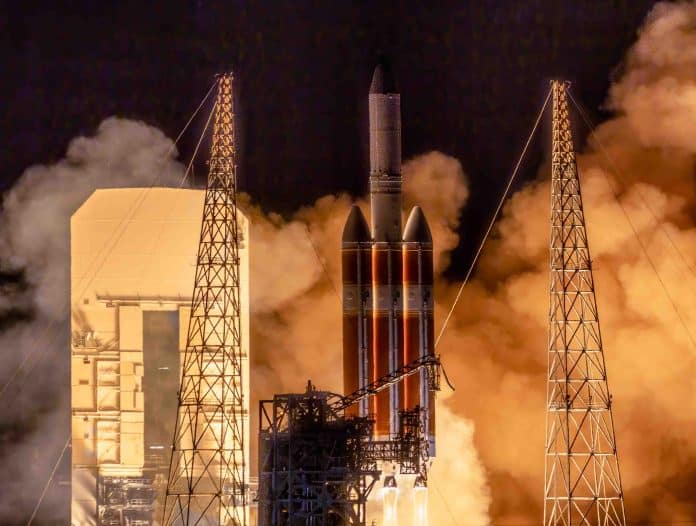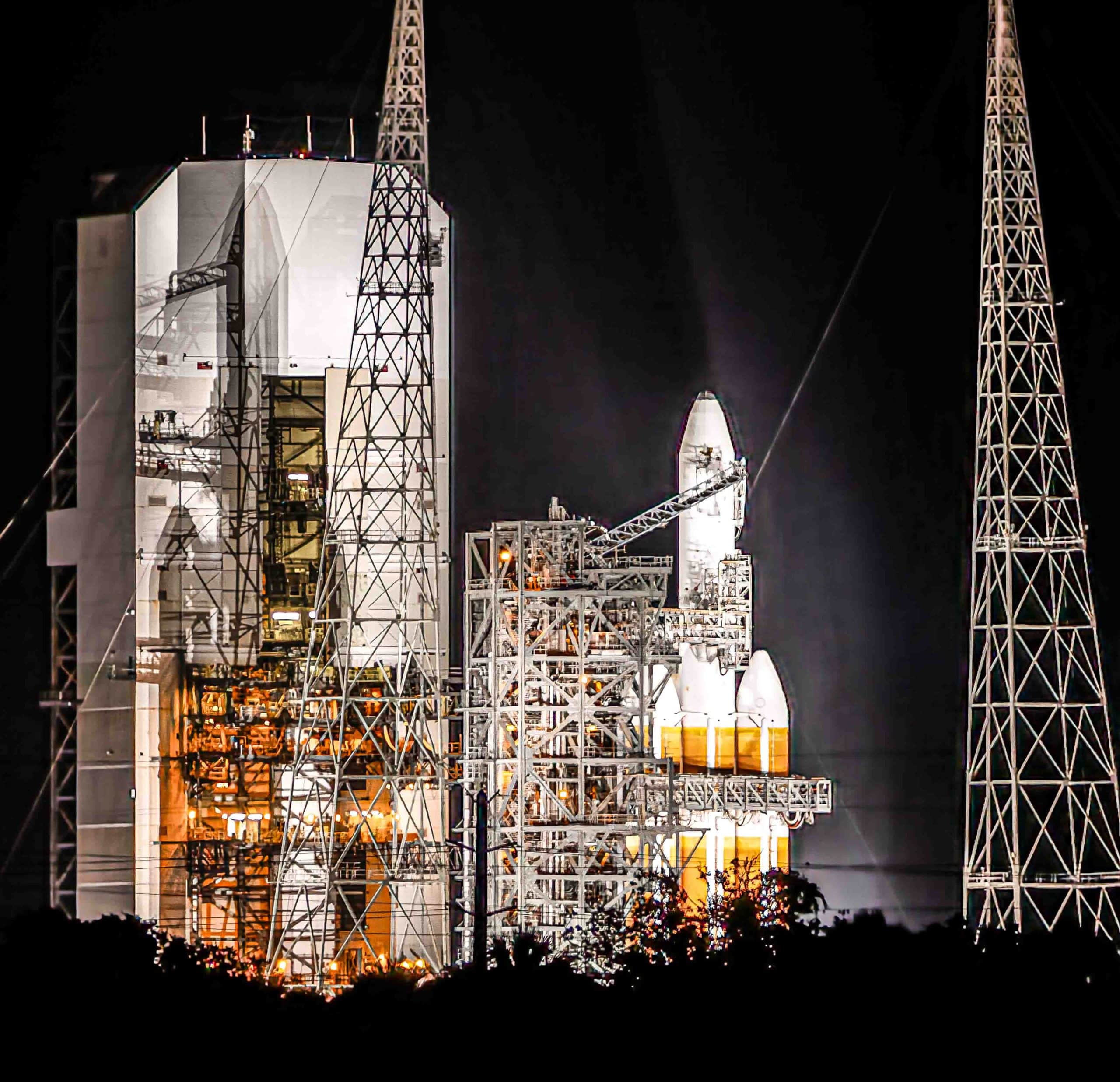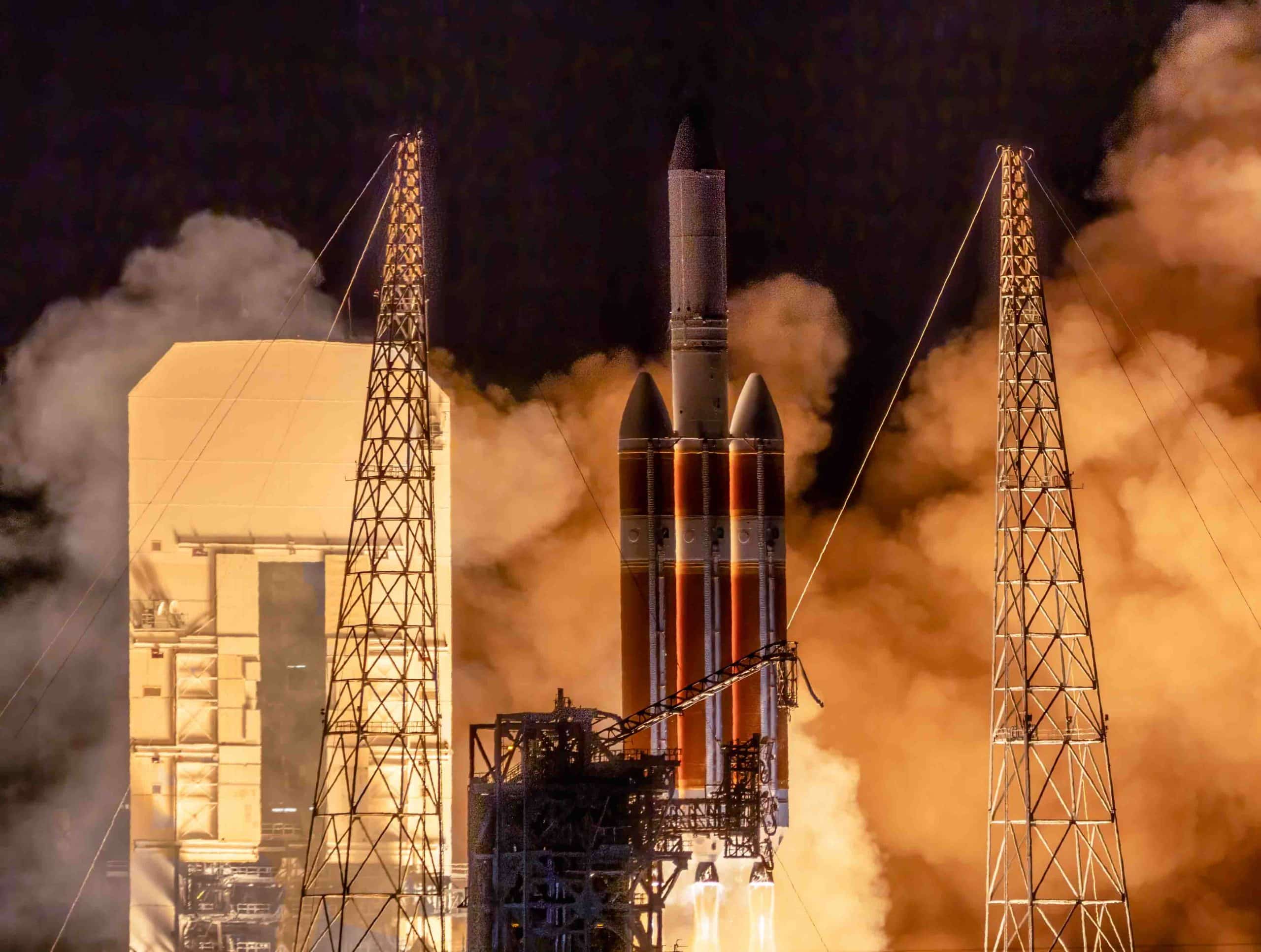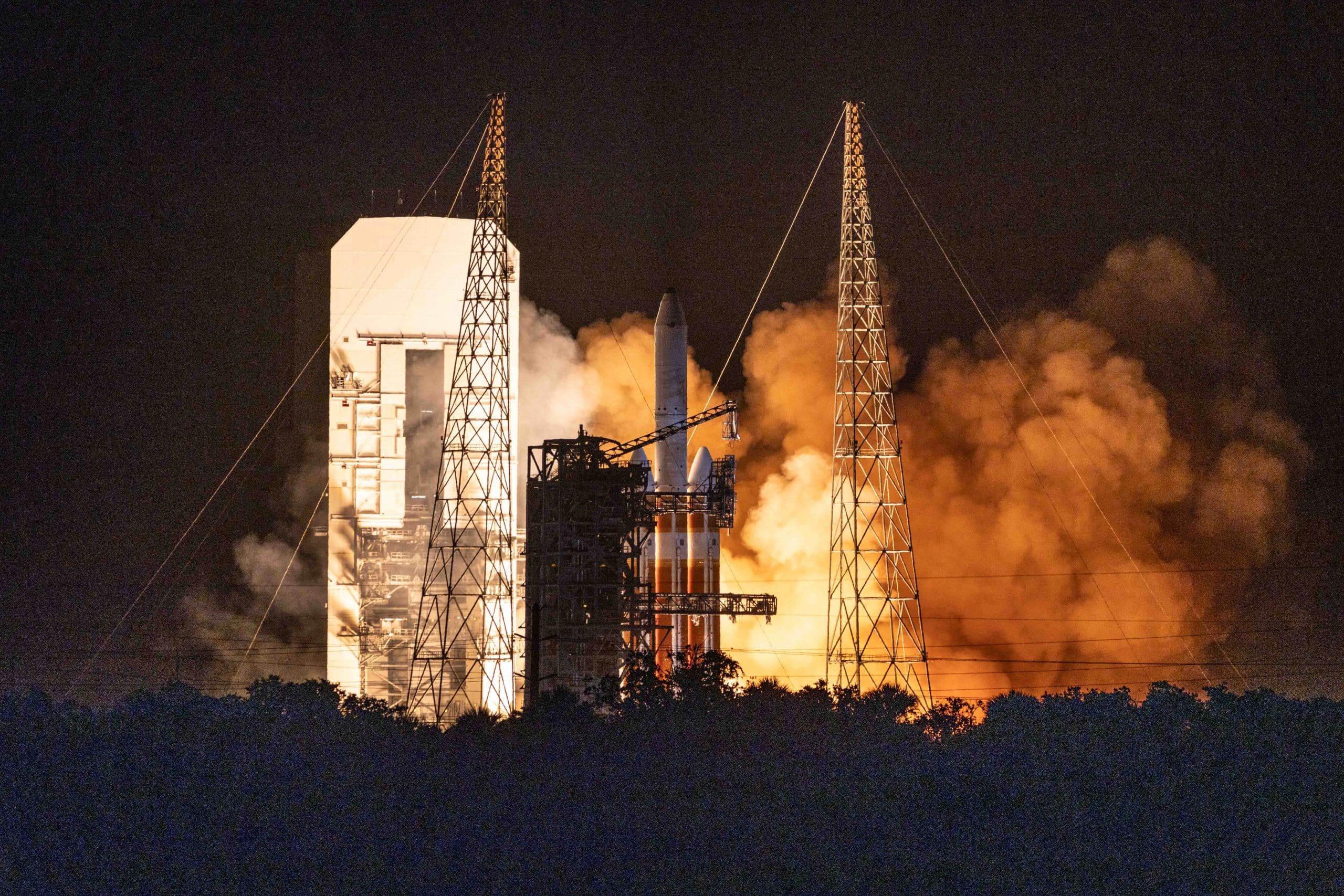United Launch Alliance, a private spaceflight contractor, successfully sent a classified government satellite into orbit on Thursday, June 22, 2023. The launch came one day after a delay due to a faulty piece of ground equipment. The mission to deploy the satellite for the National Reconnaissance Office finally lifted off from Cape Canaveral Space Force Station (CCSFS) Launch Complex 37 at 5:18 AM EDT.
The mission, NROL-68, carries a crucial national security satellite that will provide vital information from space to America’s government officials, intelligence analysts, and military. The US government says the satellite will also be used to support worldwide humanitarian missions. Even though the exact type and capabilities of the satellite are unknown, some observers believe the launch configuration of the Delta IV rocket suggests an Orion class satellite. Orion spy satellites are the newest class of signal-gathering intelligence satellites and are among the largest in orbit. The main antenna of an Orion-class satellite spans the length of a football field.
The launch marked the second to last use of a Delta IV Heavy Lift launch vehicle. The Delta IV has been in use by the military since 2009 and will be retired next year. With the ability to lift a 62,540-pound payload to low earth orbit or a 30,444-pound payload to a higher geostationary orbit, the Delta IV has proven itself as the “go-to” launch vehicle for the US military.
The ULA Vulcan Centaur is expected to eventually replace both the Delta IV Heavy as well as the currently used Atlas V rockets. The Vulcan Centaur will have greater mission flexibility, with configurations allowing anything from launching small satellites to sending payloads to the moon.
Last week’s launch was the result of collaboration between the National Reconnaissance Office (NRO), U.S. Space Force’s Space Launch Delta 45 (SLD 45), Space Systems Command (SSC), and United Launch Alliance (ULA).
Dr. Chris Scolese, Director of the NRO, said the mission “exemplifies the organization’s dedication to going above and beyond. The evolving architecture ensures that the United States maintains its global status as a leader in space. By deploying cutting-edge capabilities into orbit, the NRO expands its intelligence advantage and fulfills its mission of safeguarding the nation.”
The NRO has a history of successful Delta IV launches, encompassing both Medium and Heavy variants. The journey began in 2006 with NROL-22, and the final Delta IV Heavy launch from Vandenberg Space Force Base occurred in 2022 with NROL-91. Under the Launch Vehicle Production Services contract managed by the U.S. Space Force Space Systems Command’s Assured Access to Space, the NRO has one remaining Delta IV launch scheduled for 2024 from CCSFS.
Colonel Chad Davis, the mission director for NROL-68, expressed his pride in the team responsible for the latest successful launch. Davis said of the team, “Their unwavering commitment to the Delta IV program, coupled with their innovative approach and expertise in developing next-generation space vehicles, played a pivotal role in achieving this milestone.”
The NRO has overseen the launch of U.S. space-based intelligence collection missions for over 60 years. Today, the NRO continues to develop, acquire, launch, and operate the world’s most advanced spy satellites.






